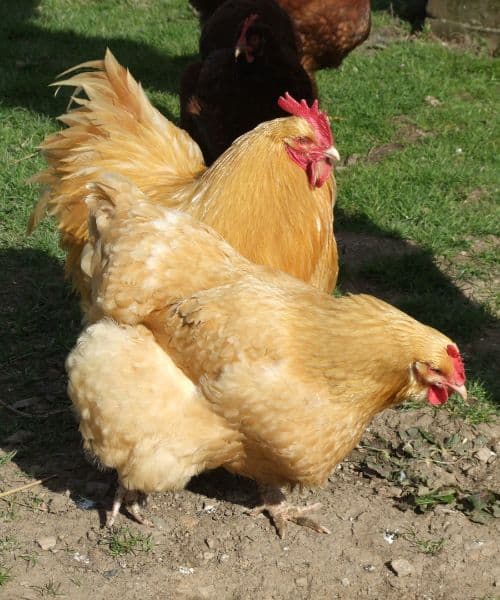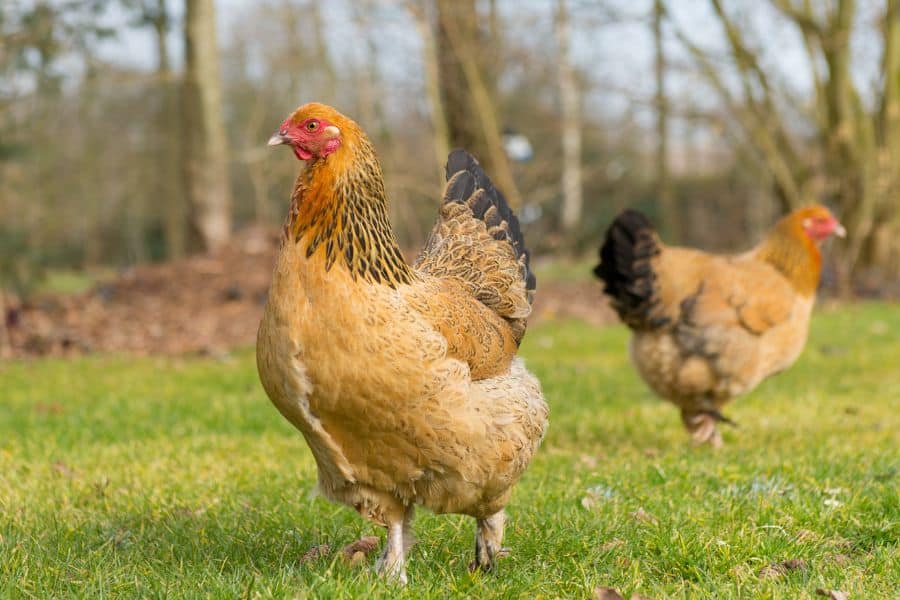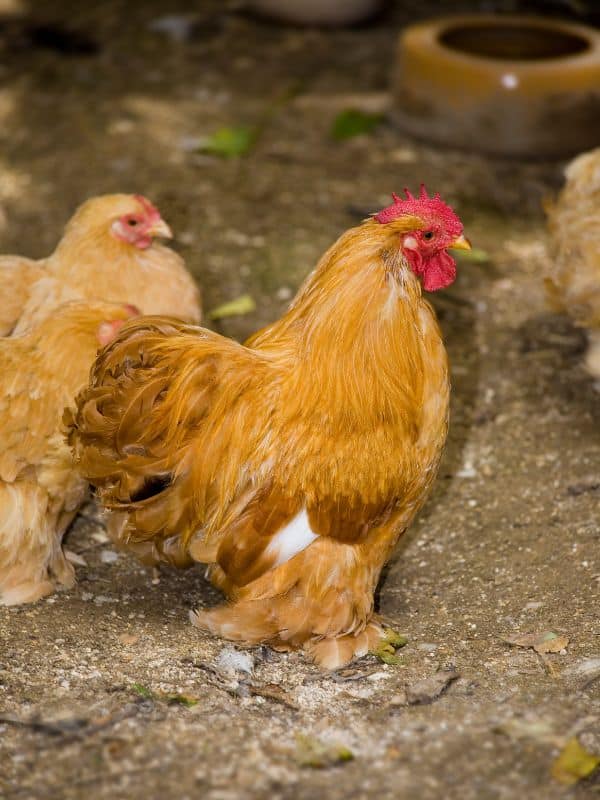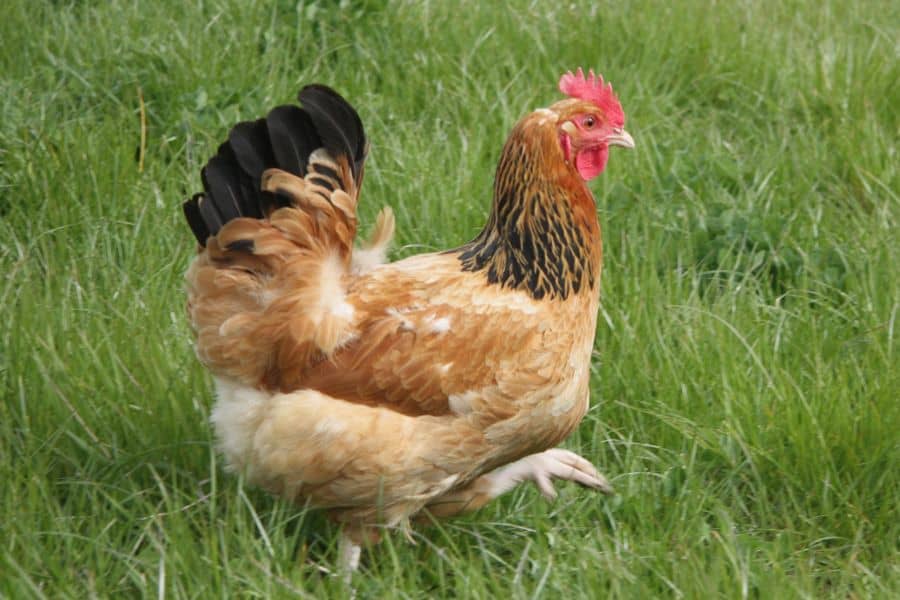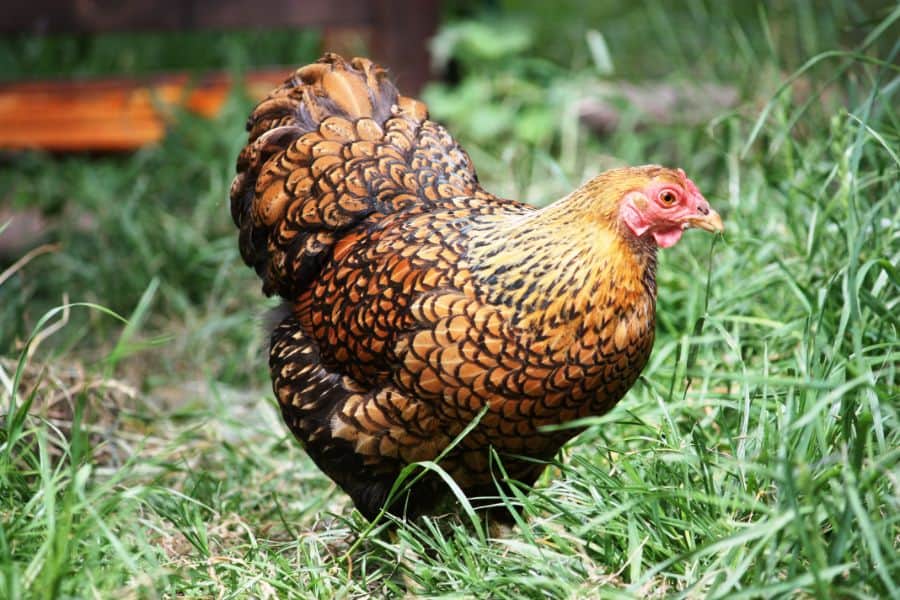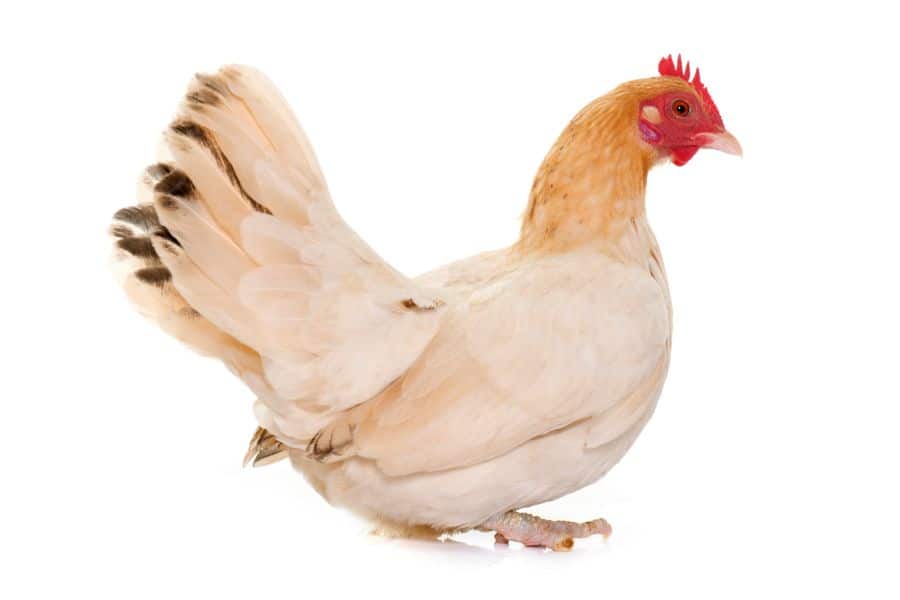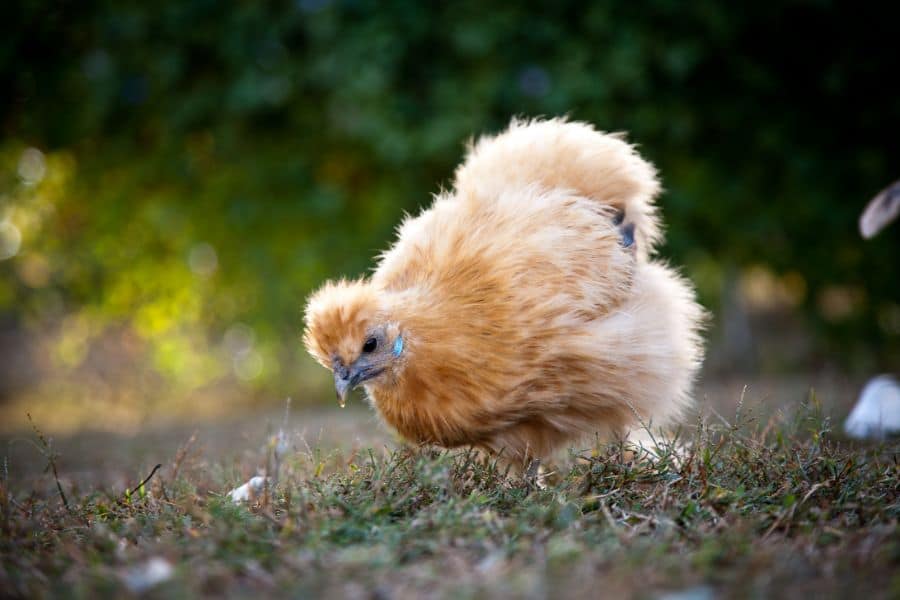Chickens are beautiful, elegant birds, and they display an almost bewildering array of different plumage types. However, one of the most beautiful and striking hues they can have is yellow.
So for anyone looking to add some of these stunning birds to their flock – or for anyone who is just curious – in this post, we bring you a list of some of the most common yellow chicken breeds.
About Yellow Chickens
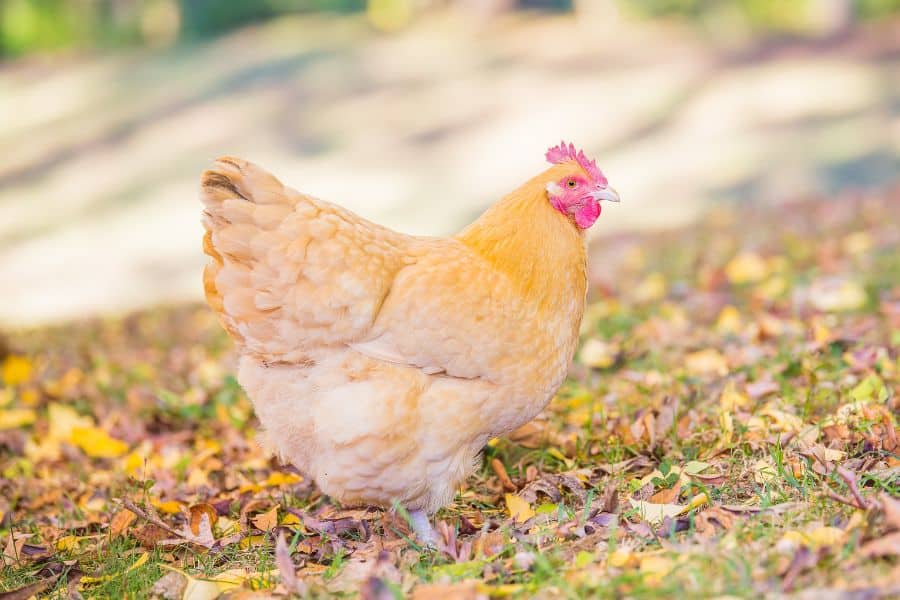
When we talk about chickens, we don’t usually use the word “yellow” – the technical word for a yellow chicken is “buff”.
Chickens can come in a wide range of colors and plumage patterns, but for each breed, authorities such as the American Poultry Association or the Poultry Club of Great Britain dictate particular standards.
According to these standards, only certain colors are acceptable, and if a chicken presents a plumage of a color that doesn’t conform to the standard, it can’t be officially considered or registered as an example of that breed.
Of course, that doesn’t make the chicken any less attractive, and it doesn’t mean it’s a worse egg layer or tastes worse in the pot, it’s just about conforming to what’s required for a bird to be accepted as an example of that breed.
However, even though “unofficial” chickens belonging to a wide range of breeds can exist with buff plumage, there is only a more limited number of breeds with an official buff version.
As a result, in this post, we have stuck mainly to breeds that are accepted by at least one major authority as a buff version – so now let’s jump right in and see which chickens can officially be buff.
Yellow Chicken Breeds
1. Orpington
The Orpington is an English breed that was created in the town of Orpington, Kent (in southeast England), after which it was named.
Its creator, William Cook, originally intended to produce a dual-purpose bird that could be used for both meat and eggs, and to do this he used a mix of Minorcans, Langshans and Plymouth Rocks.
The first birds he bred were black, which appeared in 1886. These were soon followed by a buff variety in 1894.
Despite being created for functional purposes, within a short time, Orpingtons were almost exclusively being reared for show. Interestingly, the original black color was considered ideal for the London of the day since it hid the soot and dirt of the city.
Nowadays, the American Standard accepts only five colors, black, white, buff, blue and splash.
They are large, handsome birds that enjoy being around people. They are relatively large, with roosters coming in at around eight pounds and hens about a pound less. Hens are also capable of laying up to 250 eggs per year.
As a result, they have become a popular breed among backyard chicken keepers, either for eggs, for their meat or just as friendly family pets.
| Country of origin | England |
| Use | Exhibition, dual-purpose |
| Average weight | roosters: 8-10lbs Hens: 6-8lbs |
| Egg-laying output | 200 per year |
| Egg size | Large |
| Egg color | Brown |
2. Brahma
The Brahma chicken breed was created in the United States in the 1840s from chickens that were imported from China but that ultimately descended from Malay-type chickens from India.
At the beginning, there was some confusion over the naming of the breed, and they were commonly referred to as Shanghais, after the Chinese port city they were imported from.
However, in 1852, the matter was settled by a panel of judges in Boston who decided the breed should be called “Brahmapootra” after the river in India. This was then later shortened to “Brahma”.
From the 1850s right up until the 1930s, brahmas were the main meat breed raised in the US. After this, due to the rise of battery farming techniques and hybrid strains, they fell out of favor.
In recent years, they have undergone a revival and are now an increasingly popular breed among backyard chicken keepers.
Brahmas are large chickens with feathered legs and feet. As well as being good for the table, they are also respectable layers, continuing to lay well into the winter months.
The American Poultry Association accepts three color variations: light, dark and buff.
| Country of origin | United States (from Chinese and Indian stock) |
| Use | Meat, exhibition |
| Average weight | roosters: 12lbs hens: 10lbs |
| Egg-laying output | 150 per year |
| Egg size | Medium-large (about 2oz) |
| Egg color | Brown |
3. Cochin
The Cochin chicken is similar to the Brahma chicken and shares a similar history.
Like the Brahma, it originated in China in the 1850s and was imported to the United States at around that time. Confusingly, it was also referred to as the “Shanghai” – and later as the “Cochin-China” – due to its origins.
Due to its impressive size, it was highly valued as a meat bird. However, due to its equally impressive plumage, it was also bred as a show bird.
Breeders continued to prioritize feathers over meat, and eventually, the breed became less popular as a table bird.
That said, cochins are still large chickens that are suitable for the pot, and they are also capable of laying up to 180 large eggs per year.
Furthermore, they are known to go broody and may be used to sit the eggs of other less broody breeds. The hens are also generally good mothers.
The American Poultry Association accepts nine colors, one of which is a particularly attractive and striking buff.
| Country of origin | United States (from Chinese and Indian stock) |
| Use | Exhibition, sitting, meat |
| Average weight | roosters: 8-13lbs hens: 7-11lbs |
| Egg-laying output | 180 per year |
| Egg size | Medium |
| Egg color | Brown |
3. Sussex
The Sussex chicken is an old English breed that has been around for many years. They are large birds, and the hens are also good layers, which means they make a particularly good dual-purpose breed – although they were traditionally reared primarily for meat.
The American Poultry Association recognizes only light, red and speckled varieties. However, a buff version appeared in 1920s England and is also a common color.
Sussex chickens make a good choice for backyard chicken keepers due to their versatility and their hardiness. They also have friendly, docile temperaments, so they make good pets too. In addition, due to their attractive appearance, they are also commonly kept for show.
| Country of origin | England |
| Use | Dual-purpose, exhibition |
| Average weight | roosters: 9lbs (minimum) hens: 7lbs (minimum) |
| Egg-laying output | 180-200 per year |
| Egg size | Medium-large (about 2oz) |
| Egg color | Tinted |
4. Lincolnshire Buff
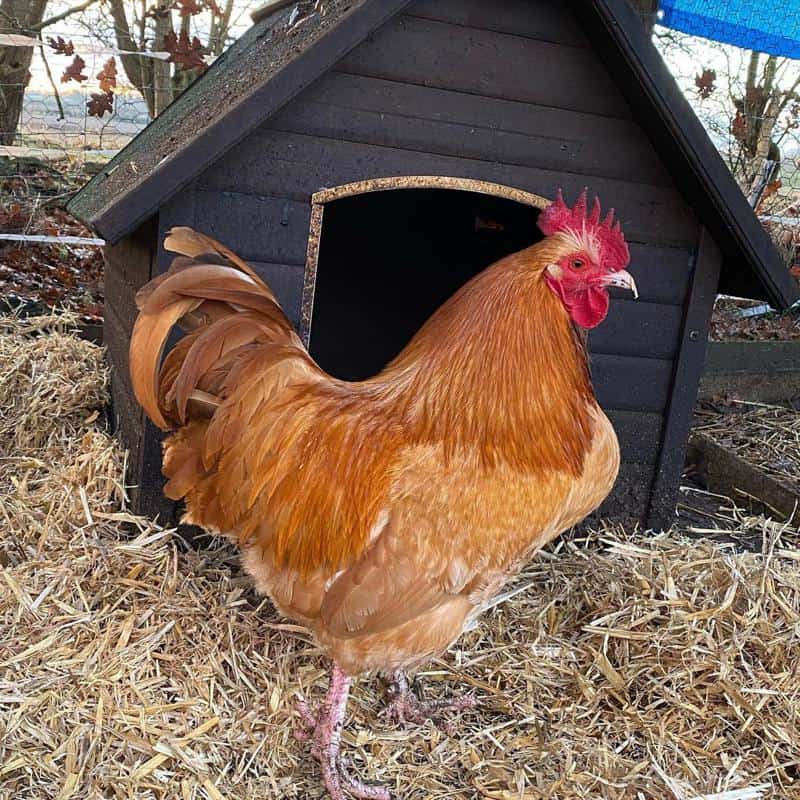
Similar in many ways to the Sussex, and with a history that is inextricably intertwined, the Lincolnshire Buff chicken is another English breed that was kept for both its meat and its eggs – during the 19th and early 20th centuries, it was extremely common in the markets of London.
By the 1920s, Lincolnshire chickens had disappeared, having been subsumed by the Orpington breed, but from the 1980s on, the breed was revived using Orpingtons along with cochins and Dorking chickens.
Nowadays, this breed is most commonly encountered in its native Lincolnshire in the east of England.
As in the past, they are an excellent choice for anyone looking for a dual-purpose breed due to their size, their flavorsome white meat and their prowess as egg-layers, even into the winter months.
| Country of origin | England |
| Use | Dual-purpose |
| Average weight | roosters: 8-10lbs hens: 6-8lbs |
| Egg-laying output | 200 per year |
| Egg size | Large |
| Egg color | Brown |
5. Plymouth Rock
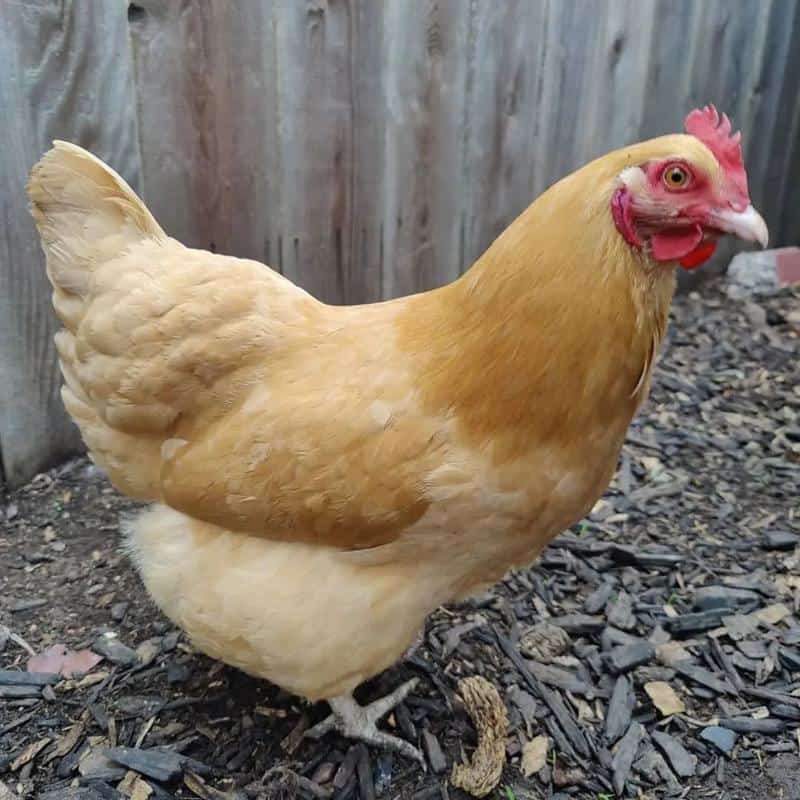
Although among the most iconic of the American chicken breeds, the origins of the Plymouth Rock are nevertheless somewhat confused.
It is thought that they first appeared in Massachusetts at some time around 1850 or later. According to one story, a breeder crossed some Black Java hens with a rooster with barred plumage – and then continued to breed selectively for the same barred plumage.
However, others suggest that the line also includes some blood from Brahmas, Cochins, Dominiques and white-faced Black Spanish chickens.
In any case, the breed went on to become wildly successful, establishing itself as the most commonly kept chicken breed in the United States throughout the early 20th century.
This is understandable since, aside from their striking appearance, Plymouth Rock chickens have a range of desirable characteristics.
They are an excellent dual-purpose bird, having both the size to make them suitable for the table and the productivity to make them excellent egg-layers – a healthy, happy Plymouth Rock hen can produce around 200 eggs per year.
They are also unfussy chickens that are easy to manage and care for. They feather early, are good sitters and are attentive mothers. In addition, they are also resistant to cold weather, all of which makes them an excellent choice for chicken-keeping novices.
While the classic color for this breed is the unmistakable barred, six other colors are accepted by the American Poultry Association – including buff, a color that first appeared around 1850.
The Entente Européenne d’Aviculture et de Cuniculture accepts ten colors and the Poultry Club of Great Britain accepts five – with buff also being among the colors listed by both associations.
| Country of origin | United States |
| Use | Dual-purpose |
| Average weight | roosters: 7.5lbs (minimum) hens: 6.5lbs (minimum) |
| Egg-laying output | 200 per year |
| Egg size | Large |
| Egg color | Brown |
6. Wyandotte
The Wyandotte is an American chicken breed that is named for the indigenous Wyandot people. Its heritage is unclear – although it probably contains significant Hamburg and brahma blood – and it is now available in a wide range of colors and patterns.
It is thought that this breed was first developed in the 1870s and 1880s, and the first birds had silver-laced coloration. A buff version was then developed through a cross with buff cochin birds, which was recognized by the American Poultry Association in 1893.
Later, a gold buff-laced version was also added.
Wyandottes are popular birds among those new to chicken keeping due to their hardy nature and friendly temperaments. They are also excellent foragers, so they do particularly well in free-ranging environments.
They are a dual-purpose breed, prized as much for their large eggs – of which they will lay up to 200 a year – as for their distinctive yellow-skinned meat.
They are also a particularly elegant chicken with a striking appearance – especially some of the laced varieties – and as such, they are commonly kept for show.
| Country of origin | United States |
| Use | Dual-purpose |
| Average weight | roosters: 8-9lbs hens: 6-7lbs |
| Egg-laying output | 200 per year |
| Egg size | Medium |
| Egg color | Brown |
8. Buff Leghorn
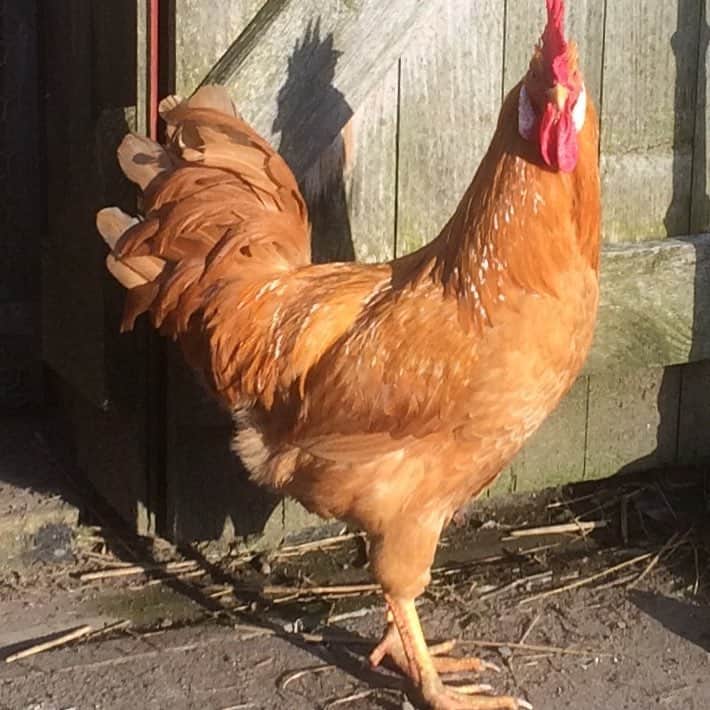
The leghorn breed traces its history back to rural Tuscany in central Italy – “Leghorn” was the traditional anglicization of the name of the port of Livorno on Italy’s west coast from where these birds were originally exported to the United States in the first half of the 19th century.
Back then, the birds were small, and in America, three colors had become established by 1874 – black, white and brown.
Subsequently, leghorns were exported from the US to Britain, where breeders increased their size by crossing them with Minorcan and Malay chickens.
The classic leghorn color is white, but the first buff leghorns appeared in Denmark in 1885 and were then seen in England in 1888.
Although they are now larger than they were historically, leghorns are still kept primarily for their egg-laying feats.
A young leghorn hen can reasonably be expected to produce around 280 eggs of about 55g per year – with more prolific birds producing up to 300 or even 320 eggs per year.
Nowadays, leghorns are also commonly used to create even more productive hybrids for commercial egg production.
| Country of origin | Italy |
| Use | Egg laying |
| Average weight roosters | 5¼lbs-7½lbs |
| Average weight hens | 4½lbs-5¼lbs |
| Egg-laying output | 280-320 per year |
| Egg size | Medium-large (about 2oz) |
| Egg color | White |
9. Japanese Bantam (Chabo)
The Japanese bantam, also known as the Chabo, is a breed of unknown origin, although it is thought to derive from the traditional game birds of Japan.
It is believed to have been in existence as early as the 17th century, although it didn’t reach Europe or the United States until the 18th century after the Meiji Restoration when Japan reopened to the outside world after two centuries of self-imposed isolation.
As a true bantam breed, Chabos have no corresponding full-sized version. They can be distinguished by their short legs and their upright tail that is higher than the chicken’s head.
According to the Poultry Club of Great Britain, three feather forms exist: normal, frizzle and silkie. They exist in a wide range of colors and pattern variations, including black-tailed buff and buff Columbian.
Due to their diminutive size, they are of little use for either eggs or meat and so are kept almost exclusively as ornamental birds or for show.
| Country of origin | Japan |
| Use | Ornamental, exhibition |
| Average weight | roosters: 1.1-1.4lbs hens: 0.9-1.1lbs |
| Egg-laying output | 100 per year |
| Egg size | Small |
| Egg color | Cream or tinted |
10. Silkie
The silkie is among the most distinctive and bizarre-looking chicken breeds there are, and with their fluffy plumage that more resembles the fur of a mammal than the feathers of a bird, you’re unlikely to mistake one for anything else if you ever see one.
The origins of this breed are obscure, but most people believe they are likely to have originated in China many hundreds of years ago. Indeed, it is possible that Marco Polo mentioned having encountered this breed during his travels in the Far East during the 13th century.
Later, when this breed began to appear in Europe, some people even believed them to be the result of a cross between a chicken and a rabbit!
Unsurprisingly, due to their striking appearance, they are often kept for show. However, they are an extremely docile and good-natured breed, so they make good pets – and they are known to go broody, so much so that they are commonly used to sit the eggs of other breeds.
Since they are small, they are not usually kept for eggs, and their black skin and meat can be off-putting to many European or American diners. However, in parts of East Asia, silkie meat is seen as a delicacy.
One of the difficulties of keeping silkies comes from their feathers – due to their fluffy nature, these birds don’t do well in wet or muddy conditions and need extra help to keep clean.
Silkies exist in several color varieties that are accepted by various authorities around the world, with buff being one possibility.
| Country of origin | China (most likely, although not certain) |
| Use | Exhibition and ornamental, meat |
| Average weight | roosters: 2-3lbs hens: 1.5-2lbs |
| Egg-laying output | 120 per year |
| Egg size | Small |
| Egg color | Cream or tinted |
11. Australorp
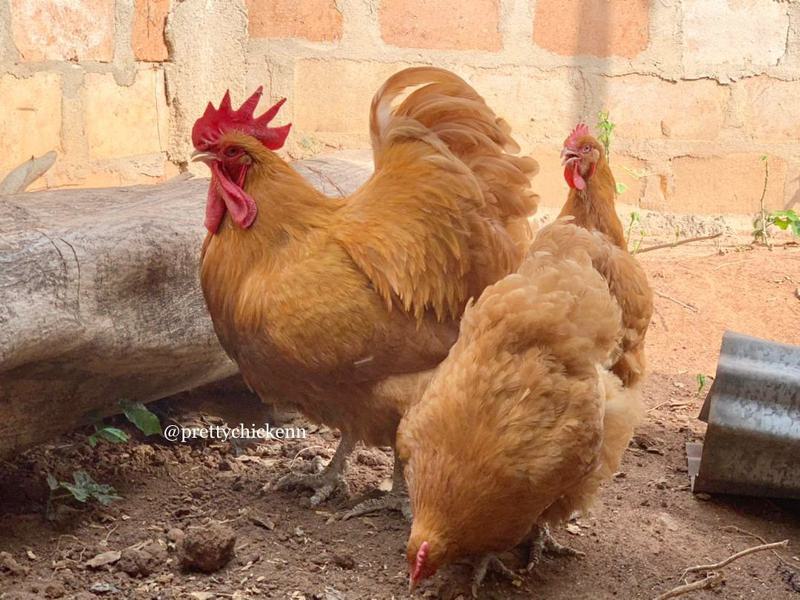
The Australorp is a large Australian chicken breed that’s closely related to the Orpington – indeed, its name is a portmanteau of “Australian” and “Orpington”.
However, after Orpingtons were exported to Australia in the 1890s, other breeds such as Rhode Island Reds, Minorcans, White Leghorns and Langshans were added to the line to improve certain traits.
While its size makes it a worthy bird for the table, and it can be considered a dual-purpose breed, it is primarily valued for its egg production due to the truly prodigious egg-laying feats it is capable of.
Soon after the breed was created, it began making waves in the world of poultry due to the egg-laying records it was breaking. For example, one hen set a truly astounding record by laying 364 eggs over a 365-day period.
With the increased interest in backyard chicken keeping, Australorps have become increasingly popular.
This is partly because they are such renowned egg layers, but they are also extremely easy to keep and are also good sitters and good mothers, making them ideal for anybody who wants to hatch chickens without resorting to using an incubator.
Australorps are typically black, and this is the only accepted color in the United States. However, buff is a possible – if more unusual – color for an Australorp, and it is accepted in certain places, for example, South Africa.
| Country of origin | Australia |
| Use | Dual-purpose but especially valued for egg production |
| Average weight | roosters: 7-9lbs hens: 5-7lbs |
| Egg-laying output | 250-300+ per year |
| Egg size | Large |
| Egg color | Light brown |
Related:
A Broad Variety of Yellow Chickens to Choose From
So as we’ve seen, many of the most famous or popular chicken breeds are available in a yellow – or “buff” – color, so if you’re looking to add one or more to your flock, you have a good range of chickens to choose from.
Of course, there are many other non-official chickens with yellow plumages that you could also potentially buy, but with our list, now you know about the major breeds that offer an official buff option.
